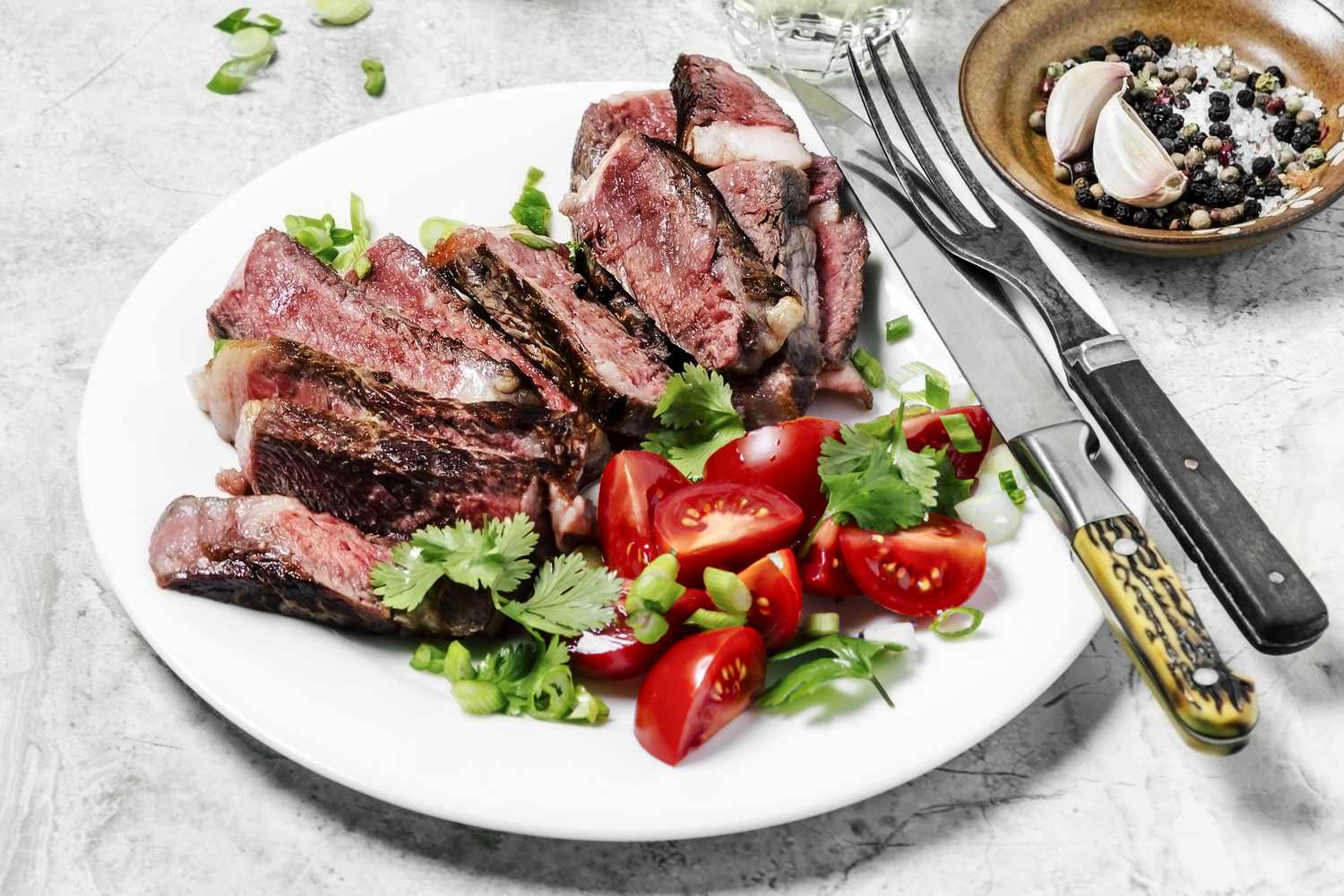
How I Make Home-Cooked Steak Taste Like It Came From a Fancy Restaurant
Sometimes nothing hits the spot like a juicy, flavor-packed steak, and I’ve always found that the best place to get one is from the expert chefs at a high-quality steakhouse. But it isn’t always in the cards (or my budget) to eat at an upscale restaurant. To make my at-home steak nights rival going out, I stole a trick from one of New York City’s top spots.
Bourbon Steak New York is a beautiful restaurant located near Central Park in Manhattan. As you would expect by the establishment’s name, they specialize in steak (but also make excellent seafood). I ate there a few months ago and was bowled over by the flavor in the meat. I’ve been thinking about that steak ever since and recently asked executive chef Bryan Ogden for his secrets. Of course, starting with high-quality beef is the most important thing, he said. But, a red wine compound butter is the finishing touch that takes his steaks over the top.
Why Compound Butter Is Magical on Steak
If you cook a lot, you might have heard of compound butter, which is made by stirring ingredients like shallots, garlic, and/or chopped herbs into softened butter. Butter is already delicious, so adding other delicious things only makes it better! Compound butter is traditional on steak; it adds a luxe richness that complements every bite of the meat. But it’s also fantastic spread on bread or served on top of roasted vegetables.
In Bourbon Steak New York’s version, red wine is cooked down on the stovetop with shallot, garlic, and herbs and then folded into room-temperature butter. The extra step of reducing wine made for the most deeply flavored compound butter I’ve ever tasted. And since the whole thing takes less than 10 minutes, plus a few minutes of cooling time, it’s still a low-lift way to elevate steak at home.
“The red wine butter adds an extra layer of texture, acidity, and richness to steak,” says Chef Ogden. “We use it on all of our steaks, and I’ve also used it on vegetables and fish.”
How to Make Red Wine Compound Butter
Bourbon Steak New York’s recipe starts with about eight pounds of butter! (That’s restaurant cooking for you.) It also calls for a combination of port and red wine. I’ve adapted the recipe to make it home cook friendly. In addition to reducing the quantities, I swapped out the port (since not many of us have a bottle of port at the ready) in favor of more red wine and some balsamic vinegar for sweetness. Here’s how to make it:
Ingredients
3 oz. red wine (about ⅓ cup)
2 Tbsp. balsamic vinegar
1 Tbsp. finely chopped shallot
1 clove garlic, finely chopped or grated on a Microplane
1 bay leaf
2 springs rosemary and/or thyme
Kosher salt
1 stick (4 oz.) salted or unsalted butter, softened
Directions
- Bring the wine, balsamic vinegar, shallot, garlic, bay leaf, and herbs to a simmer in a small saucepan over medium heat. Simmer until reduced and syrupy, about 7 minutes. (You should have about 2 tablespoons.)
- Let the mixture cool for 10 minutes. Discard the bay leaf and herb sprigs.
- If you have a mini food processor, add the butter, wine mixture, and 1/4 teaspoon kosher salt. Process until smooth. Taste and add more salt if needed (it will probably be needed). If you don’t have a mini food processor, just mash everything together in a bowl with a fork and a rubber spatula. It may not be as pretty, but will still taste good.
Top your cooked steak with a big dollop of the butter, and prepare for beefy bliss. Store leftover compound butter, well-wrapped, in the fridge for up to five days or in the freezer for up to three months.
Red Wine Compound Butter Tips
- Make sure to start with softened butter, so it’s easy to mash with a fork.
- Use salted or unsalted butter. You will likely need to add more salt after blending in either case. You want the butter to be very well-seasoned.
- This is an ideal use for leftover wine!
More Tips for Delicious Steak
- Season with authority: Salt the steak generously before cooking, making sure to get both sides and the edges if they’re thick. Kosher salt is ideal for this job since you can sprinkle it onto the steak with your fingers for maximum control. Feel free to pepper the steak too. Sprinkling the steak with flaky salt, like Maldon, after cooking is never a bad idea.
- Take its temperature: Use an instant-read thermometer inserted into the thickest part of the steak to make sure it’s cooked exactly to your liking. You want 120°F for rare, 130°F for medium-rare, 140°F for medium, and 150°F for medium-well. The temperature will continue to rise a few degrees as it rests (see the next tip).
- Give it a rest: Ogden recommends letting your steak rest for 5 to 10 minutes after cooking and before serving. This allows some of the juices to reabsorb into the meat for a more succulent eating experience. You can simply transfer the steak to a plate to rest. Or, for extra credit, set it on a rack over a baking sheet. This will keep the bottom from getting soggy.










